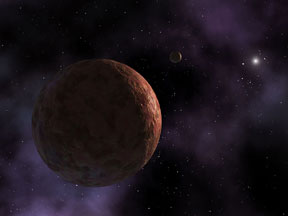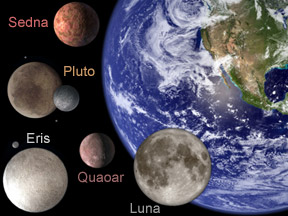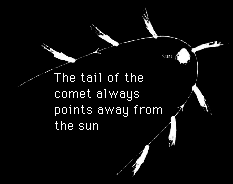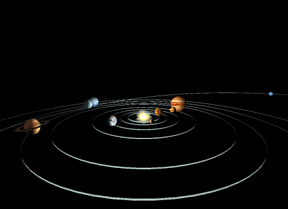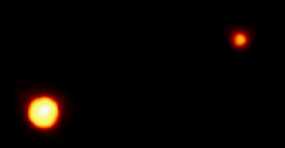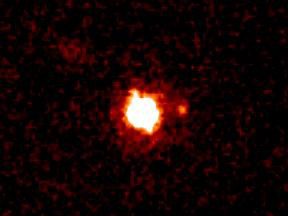Click on image for full size
Image courtesy NASA/JPL-Caltech/R. Hurt (SSC-Caltech)
Trans-Neptunian Objects (TNO)
There are many icy and rocky planetoids on the outer edge of our Solar System. As a group, all bodies that orbit, on average, further from the Sun than the 8th planet Neptune are called Trans-Neptunian Objects (TNOs).
There are different classes of TNOs. The region of space just outside Neptune's orbit, but largely near the same plane in which the planets revolve, is called the Kuiper Belt. Much further out is the Oort Cloud, which is scattered into a gigantic sphere around the Sun. Some astronomers recognize a third class of TNOs called scattered disc objects (SDOs), which may be in transition between the Kuiper Belt and the Oort Cloud. SDOs have orbits intermediate between the Kuiper Belt and the Oort Cloud, in terms of both size of orbit and amount of tilt of orbital plane.
This region is the main source of comets that visit the inner Solar System. When the orbits of TNOs are disturbed, the objects can be flung out of the Solar System or they can plunge inward towards the Sun.
TNOs hold clues to the origin and evolution of our Solar System. Some Kuiper Belt Objects (KBOs) may have formed near their current positions, and may thus be deep frozen samples of material from the earliest days of our Solar System. Many KBOs, Oort Cloud objects, and SDOs have been scattered into their current locations by past gravitational interactions with large planets, particularly Jupiter. Their orbits provide clues about possible changes in positions of the gas giant planets throughout the history of our Solar System.
The planet Pluto and its large moon Charon are examples of the Kuiper Belt subset of TNOs. Quaoar, Orcus, and Varuna are some other KBOs you might have heard about. The "tenth planet", 2003 UB313 (nicknamed "Xena"), seems to be a scattered disc object. Sedna might be an extreme innermost fringe member of the Oort Cloud.


